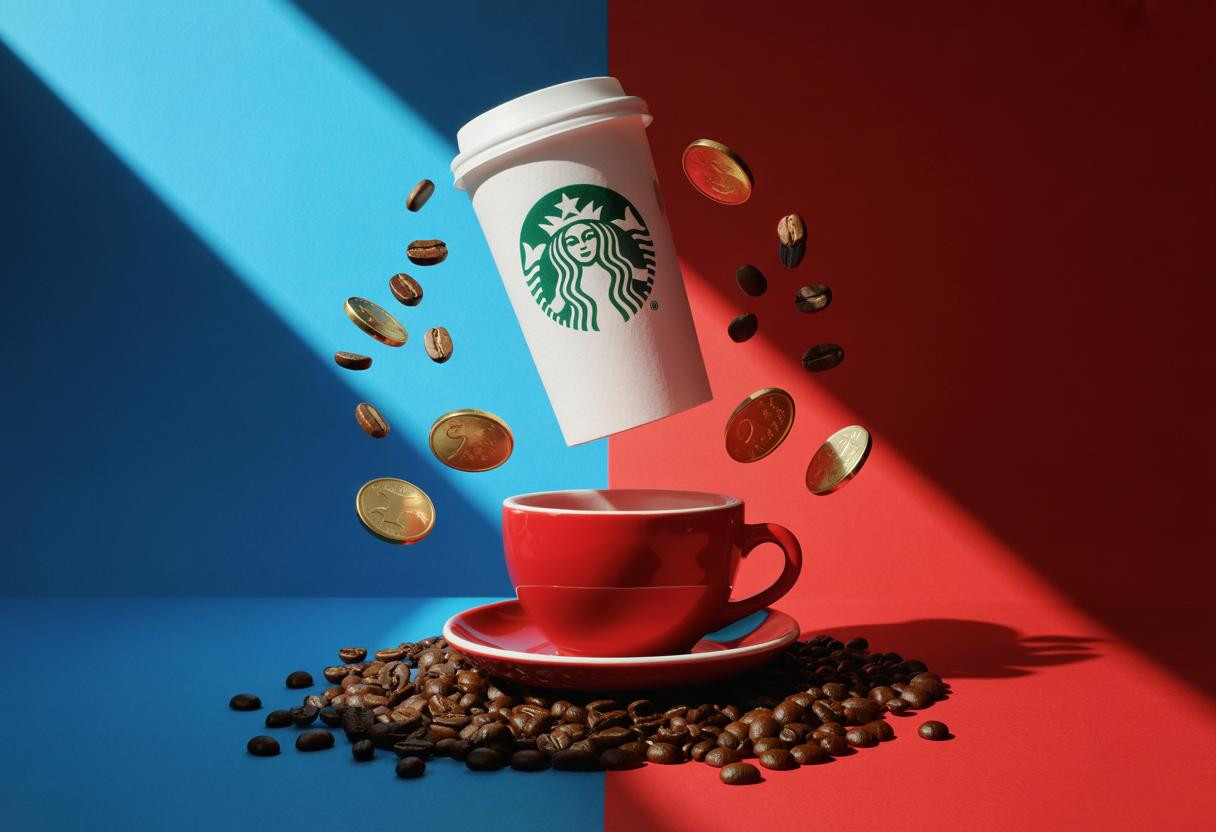Luckin Coffee’s aggressive $2-$3 pricing strategy for their upcoming U.S. expansion could trigger the most dramatic coffee market disruption since Starbucks went mainstream. With over 22,000 locations already dominating China’s coffee landscape, this company that once faced a $310 million accounting scandal is now preparing to challenge America’s $45 billion coffee industry with prices that undercut Starbucks by up to 52%.
The remarkable comeback story behind America’s next coffee invasion
Just five years ago, Luckin Coffee was delisted from Nasdaq after fabricating hundreds of millions in sales data. Today, they’re opening their first U.S. location at 755 Broadway in New York City’s East Village, targeting Chinese students, tourists, and diaspora communities with their tech-driven ordering system.
The company’s post-scandal recovery mirrors how career transitions at different life stages require strategic reinvention. Luckin reached 24,097 stores across Asia by Q1 2025, proving their ability to rebuild trust through disciplined execution rather than just aggressive expansion.
The numbers tell a compelling story: While the average 12oz latte costs $4.60 in America, Luckin plans to offer comparable beverages for $2-$3, creating an immediate 35-50% price advantage that could force established chains to reconsider their premium positioning strategies.
How financial scandals spread faster than recovery stories
The 2020 accounting fraud created lasting credibility concerns that Luckin must navigate carefully in the U.S. market. Much like how rumors spread faster than facts, negative perceptions about corporate governance can persist long after companies implement meaningful reforms.
Trust rebuilding through operational excellence
Luckin’s recovery strategy focuses on transparent financial reporting and consistent operational performance. Their Q3 2024 revenue of $1.45 billion demonstrates sustained growth, while their careful U.S. supply chain development—including procuring 120,000 tons of Brazilian coffee for 2024-2025—signals methodical planning rather than reckless expansion.
The company’s partnership approach, including Houston Rockets branding collaborations, suggests they understand the importance of building local credibility through established American brands and cultural touchpoints.
The technology advantage reshaping coffee retail
Luckin’s app-driven ordering system represents a fundamental shift toward digital transformation strategies that prioritize convenience over traditional coffeehouse experiences. Their small-format stores emphasize pickup and delivery over seating, potentially reducing real estate costs while maximizing transaction volume.
Data-driven personalization at scale
Unlike traditional coffee chains that rely on barista recommendations, Luckin uses customer data analytics to personalize offerings and optimize inventory. This technological infrastructure helped them achieve rapid scalability in China and could provide similar advantages in competitive U.S. markets.
Their hybrid model balances affordability with quality perception—maintaining core items below $3 while offering premium options for customers willing to pay higher prices.
Market disruption scenarios and competitive responses
Conservative projections suggest Luckin could capture 2-5% of NYC’s coffee market share by 2027, focusing initially on price-sensitive demographics. More aggressive scenarios envision 1,000+ U.S. locations by 2030 if they successfully adapt their rapid expansion model to American consumer preferences and regulatory requirements.
Strategic implications for established players
Starbucks and other premium chains face a classic innovator’s dilemma: compete on price and risk margin erosion, or maintain premium positioning while potentially losing market share. Early responses may include enhanced loyalty programs, subscription models, or bundled service offerings that justify higher prices through added convenience.
The timing factor matters significantly. Luckin’s entry during a period of inflation-conscious consumer behavior could accelerate adoption among budget-minded coffee drinkers seeking quality alternatives to expensive specialty drinks.
What this means for American coffee culture
Luckin’s U.S. expansion represents more than competitive pricing—it signals a potential shift toward efficiency-focused coffee retail that prioritizes speed and affordability over experiential coffeehouse culture. Their success or failure will likely influence how other international chains approach the American market and whether consumers embrace app-first ordering as their preferred coffee purchasing method.
The next 18 months will determine whether American coffee drinkers value convenience and price over traditional coffeehouse ambiance—a test that could reshape the industry’s competitive landscape for decades to come.
